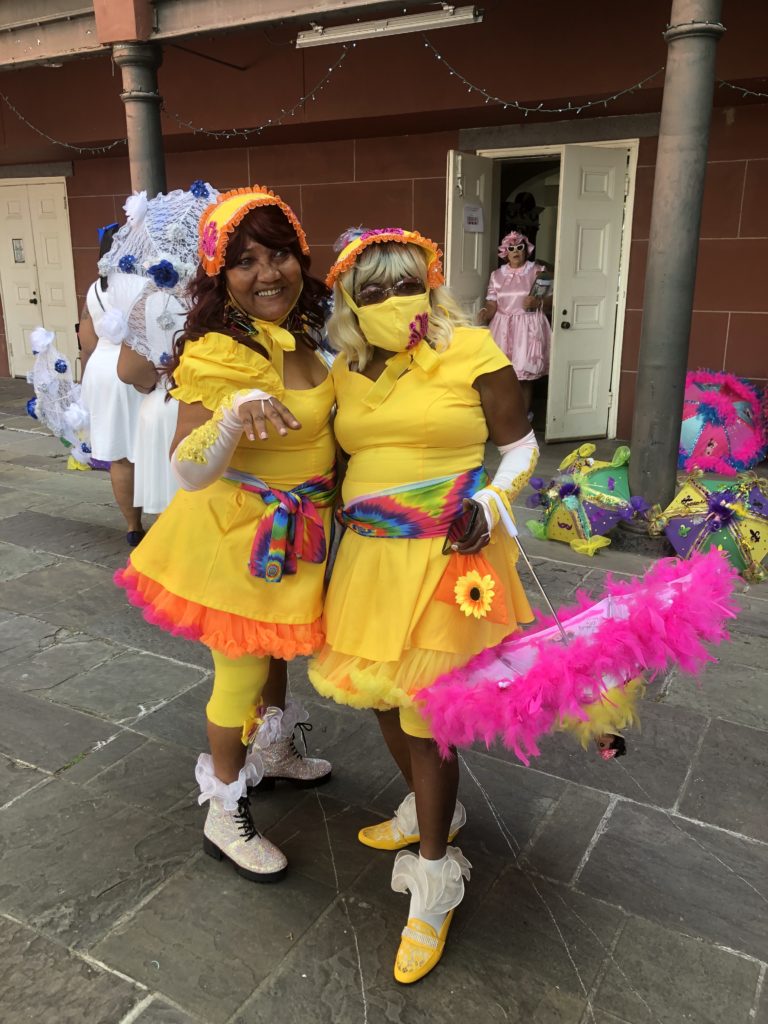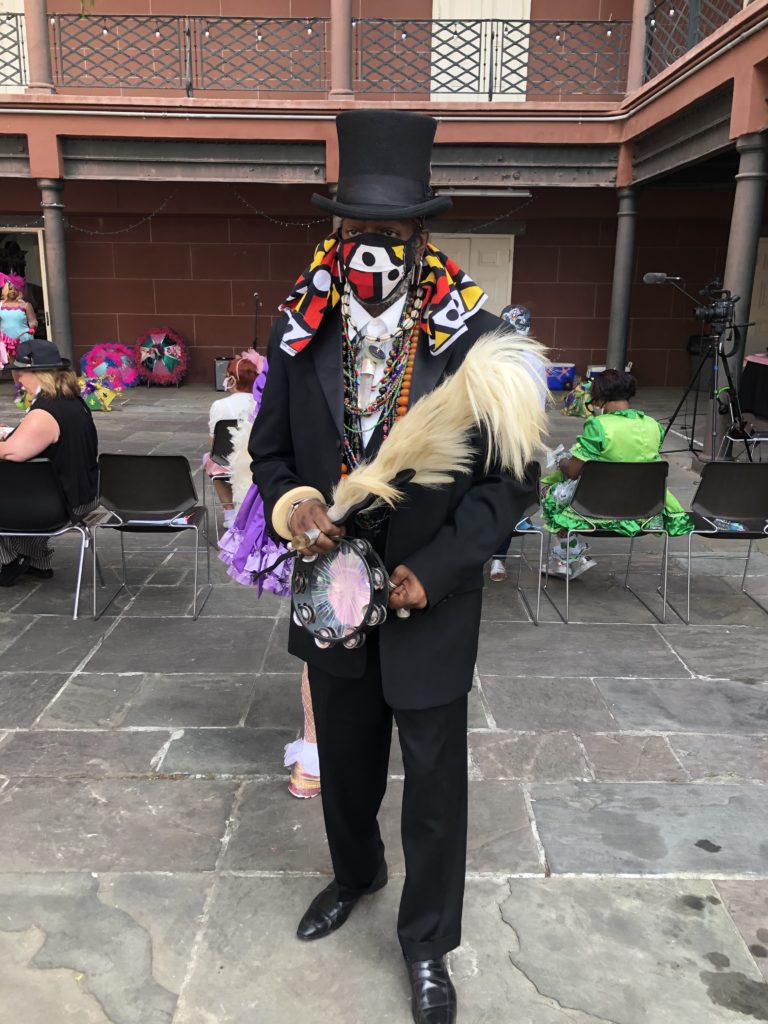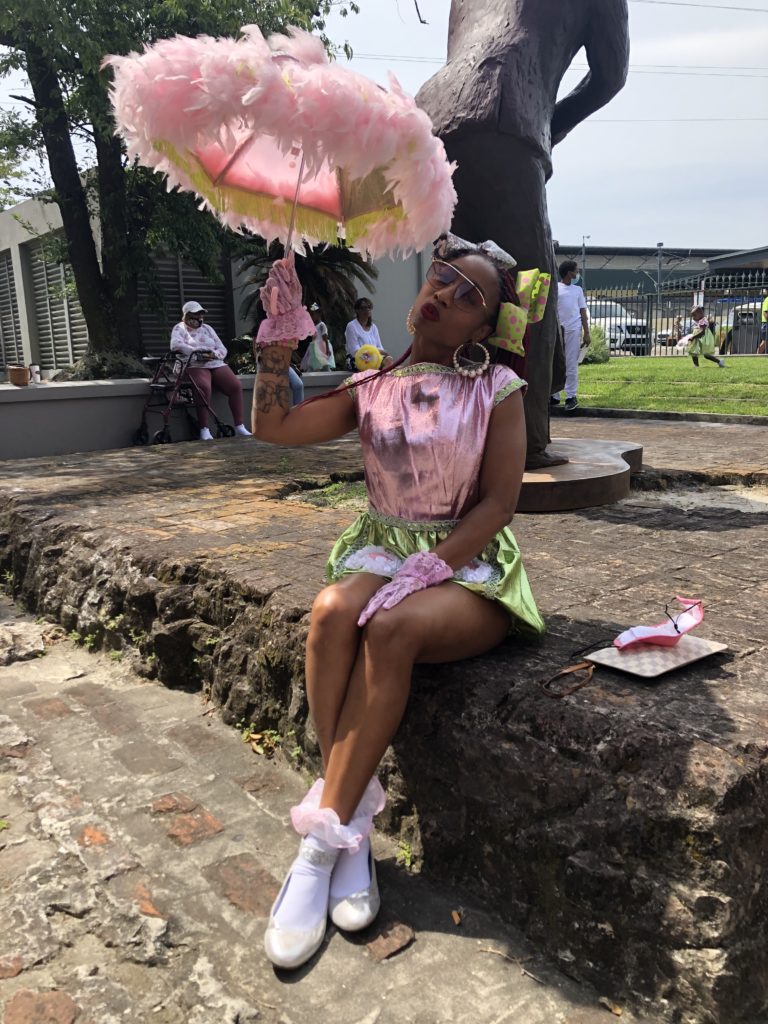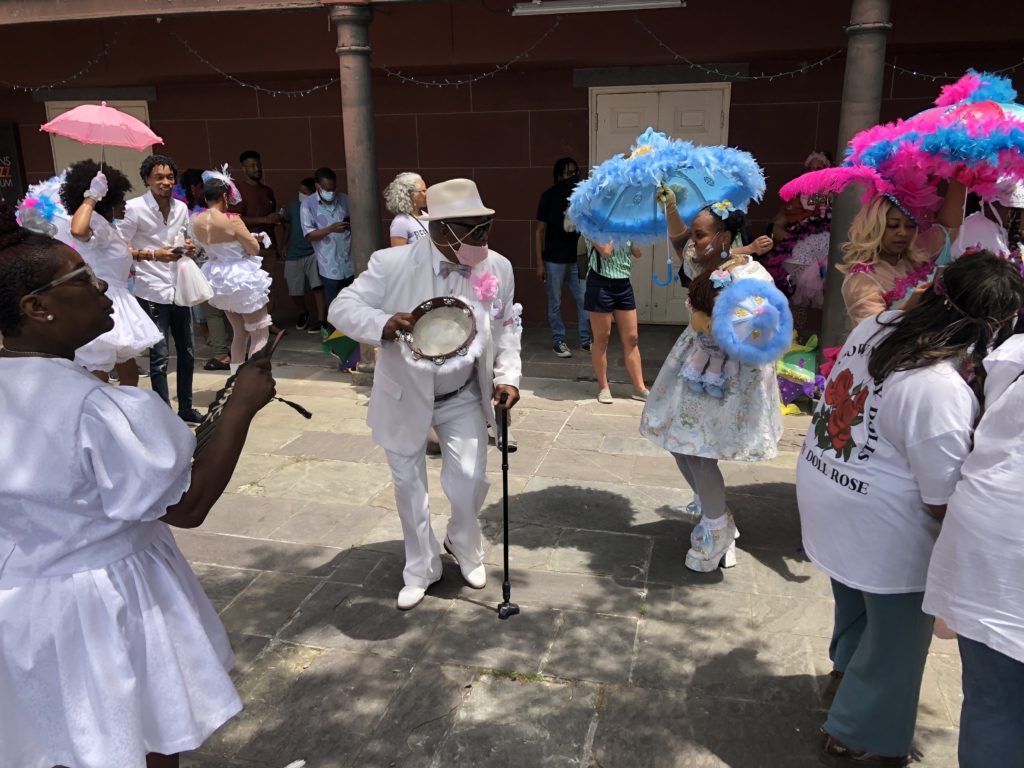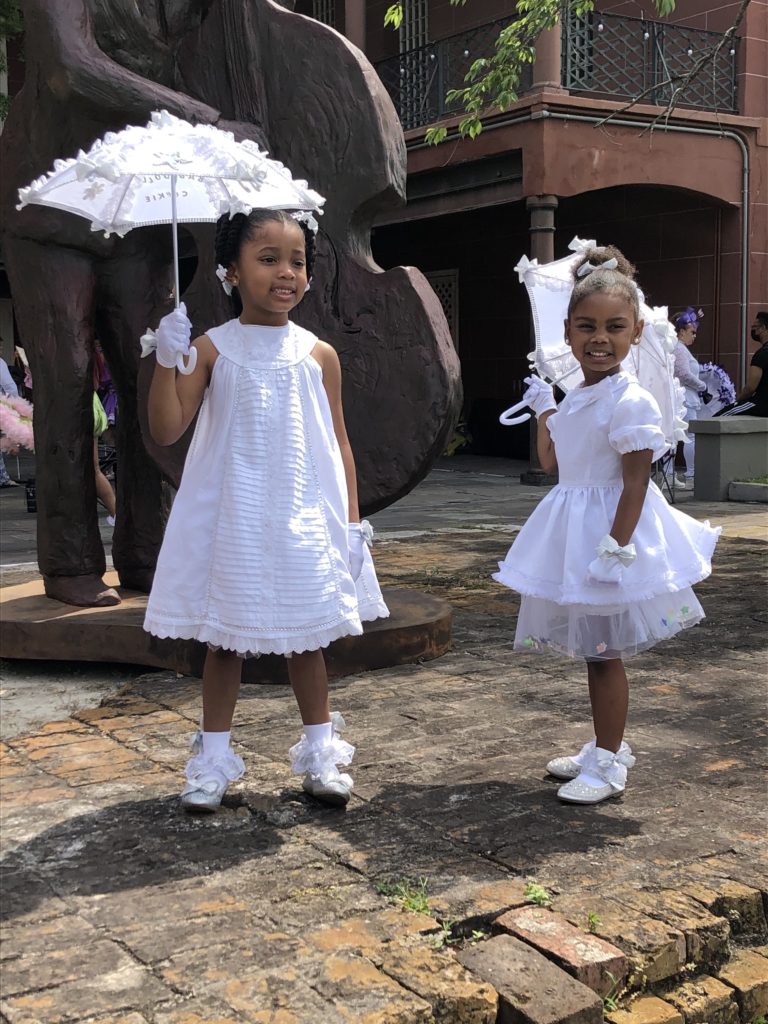The New Orleans Baby Dolls held their annual “Blessing of The Streets” on Saturday, May 1, at their annual gathering on the North Peters side of the New Orleans Jazz Museum. The ceremony serves as a welcoming induction for new members and a reunion for women who continue to represent a Mardi Gras masking tradition that has evolved over more than a century.
In her definitive book on the cultural practice, Walking Raddy: The Baby Dolls of New Orleans, Kim Vaz-Deville chronicles Baby Dolls from their origins in Black Storyville, dating back to 1912. In a 2105 article for OffBeat, she wrote, “Just how the Baby Doll masking tradition came into existence is buried in many different stories of origin. Beatrice Hill worked as a prostitute in ‘black’ Storyville, the few blocks around Gravier and Perdido Streets. There gambling, drinking and sex for pay were readily available to both black and working-class white men. Hill said the Baby Doll tradition began as a result of a competition between her uptown (above Canal Street) gang and a downtown group of women working in Storyville itself. Another woman who masked told WPA field investigator Robert McKinney that she always dressed as a Baby Doll and other women began to imitate her. Regardless of the veracity of either claim, by the 1930s the Baby Dolls had become an iconic part of Black Mardi Gras traditions alongside the Indian gangs, the Zulu Social Aid and Pleasure Club parade and the Skeleton gangs.
“Over time, participation in the tradition declined, as some maskers grew older. And as time passed the tradition was deemed old-fashioned, a similar issue experienced by diminishing participation in other black traditions such as the Zulu Social Aid and Pleasure club and the brass band organizations. In addition, when the interstate was built on Claiborne Avenue, the result was to destroy the epicenter of Black Mardi Gras celebrations; hundreds of families were dislocated. Furthermore, in spite of the fact that the tradition had drawn participants in all walks of life, it remained tainted with the association to prostitution making it unfashionable and embarrassing with the rise of the civil rights and Black Power movements from the 1950s through the 1970s.
“The revival of the tradition began in the millennium with the efforts of Antoinette K-Doe, Geannie Thomas and Eva Perry. These founding members of the Ernie K-Doe Baby Dolls sought to honor the late R&B singer. Prior to his death, they sang back-up while he performed his old hits like ‘Mother-in-Law’ and ‘Here Come the Girls’ at revivalist events, and at the Mother-In-Law Lounge that K-Doe and Antoinette managed on Claiborne Avenue. Antoinette was quite vocal in dissociating her group from the sullied reputation of the Baby Dolls, reminding everyone they were women working in legitimate professions.”
Watch a video from an entrance procession of Baby Dolls, a drumming group, and others at the start of the “Blessing of the Streets.”

